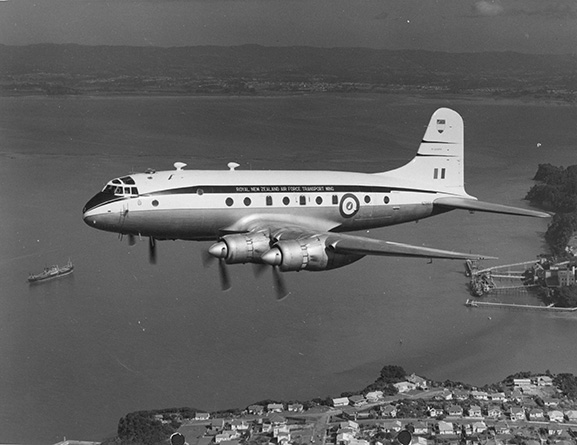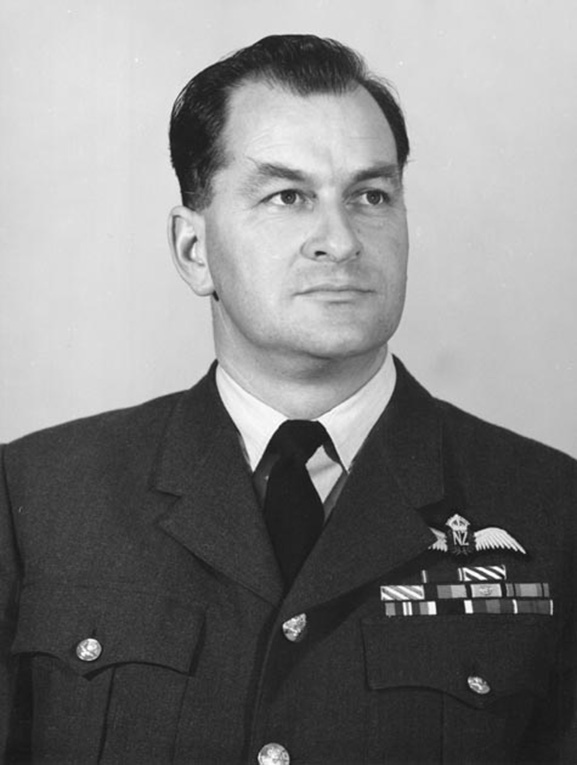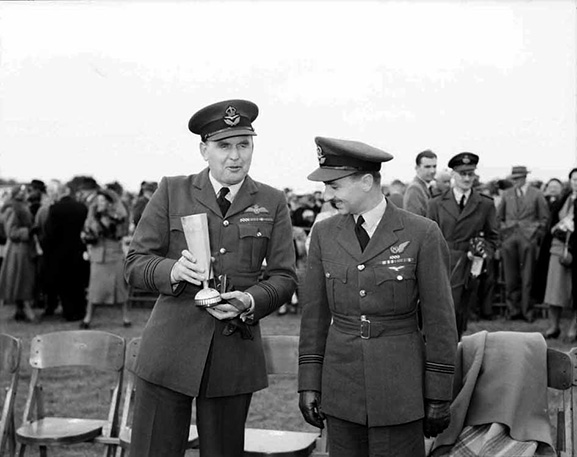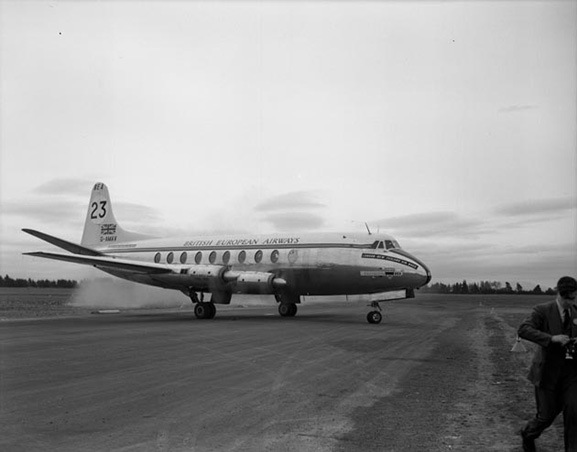65 years ago, the RNZAF took part in what would be the last of the world’s great air races – and narrowly averted disaster.

The 1953 International Air Race was the initiative of the Canterbury International Air Race Council. At 19,756km it was the world’s longest air race, comprising two categories – a speed section and a transport handicap section. On 8 October 1953, eight competing aircraft from four different countries took off from Heathrow Airport in London, bound for Harewood Airport, Christchurch. New Zealand’s sole entry in the race was a Handley Page Hastings from No. 41 Squadron RNZAF, competing in the transport section.


The Hastings was often jokingly referred to as ‘the finest 3-engined aircraft in the world’ on account of the frequency with which one of its four engines would break down. Nevertheless, in the six months leading up to the start of the race, ground crew worked tirelessly to prepare the aircraft (NZ5804), overhauling the engines and stripping all unnecessary fittings from the interior, while air crew undertook several training flights across the proposed air race route.

The Hastings carried two crews for the race, along with a servicing and maintenance crew, an RNZAF medical officer and meteorologist and two civilian journalists. Second off the starting line, NZ5804 made steady progress over the first half of the route, making several refuelling stops before running into a monsoon storm – and near disaster – over the Indian Ocean.

Squadron Leader Larry Siegert DFC, a former wartime bomber pilot, was flying as the relief pilot when, true to reputation, one of the Hastings’ engines failed. Siegert battled with the crippled aircraft through fierce thunder storms for over 90 minutes before being picked up by radio over the RAF station at Negombo, Ceylon (now Sri Lanka). With fuel running low, Siegert brought the Hastings in to make an emergency landing at Negombo. However, the cloud was down to just 500 feet and he was forced to circle the area three times while they tried to locate the runway. Meanwhile, having been alerted to the potential crisis unfolding above them, personnel on the ground responded immediately, manning emergency vehicles in readiness. Against the odds, Siegert saw a ‘window of opportunity’ and managed to get the Hastings down in heavy rain and high winds, landing halfway along the runway in ankle-deep water and carrying over onto flooded shingle. The aircraft’s wheels sank deep into the shingle, damaging the flaps, but all the crew and passengers emerged unscathed.

Unfortunately for the RNZAF, this spelled the end of their air race attempt, and the Hastings remained stranded at RAF Negombo for 10 days while a Bristol Freighter flew out from Whenuapai with replacement parts. Squadron Leader Siegert was hailed as a hero for his skilful airmanship, credited with saving the lives of the 27 men aboard. He received the Air Force Cross for his actions, and later rose to become the Chief of Air Staff (1976-1979).

Meanwhile, the other competitors completed the race; an RAF Canberra took out first place, with a time of 23hrs 51min, while a KLM Airlines DC-6A Liftmaster was the winner of the transport handicap section.


From an air power perspective, the 1953 International Air Race demonstrated that it was possible to disperse aircraft rapidly around the world in a time of emergency. More generally, however, it succeeded in drawing world-wide attention to New Zealand, and proved for the first time that the world could be crossed in less than a day.

Although the Race had been run without personal injury or loss of life, sadly, it did have a tragic postscript. Just five days later, on 15 October 1953, De Havilland Devons NZ1811 and NZ1810 from RNZAF Station Wigram took part in the 27-aircraft flypast over Harewood airport for the official prize-giving ceremony. When the formation broke up as the aircraft prepared to land back at Wigram, NZ1811 was struck on the wing by its ‘No. 2’, NZ1810. Both aircraft immediately lost control and plunged to the ground in a paddock at nearby Halswell, killing all aboard. The loss of seven airmen in this incident represents the largest loss of life suffered by the RNZAF in a single accident in New Zealand.


The Halswell Residents’ Association will be commemorating the 65th anniversary of the tragedy with a memorial unveiling at the site, Edwin Ebbett Place, Wigram, on 15 October 2018. For more information, or to register to attend, please contact: halswell.hornby.riccarton@ccc.govt.nz.



